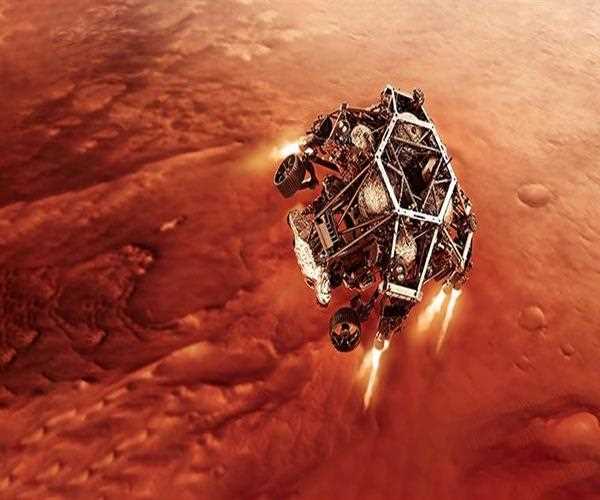Search here

12-Apr-2023
Why Indian Scientists are joining NASA instead of ISRO
India has a rich history of producing world-class scientists who have made significant contributions to various fields of science and technology. Many Indian scientists have also made their way to top positions in international organizations, such as NASA (National Aeronautics and Space Administration), which is the premier space agency of the United States. In this view, we will discuss why Indian scientists have found a place in NASA and not in ISRO (Indian Space Research Organization).
NASA is a premier space agency of the world that has been at the forefront of space exploration for over six decades. It has been responsible for many pioneering missions, such as the Apollo missions to the moon, the Hubble Space Telescope, and the Mars rovers. NASA has a long tradition of hiring international scientists and engineers who bring diverse perspectives and expertise to the agency. Indian scientists have been an integral part of NASA's scientific and technical workforce for several decades, and they have made significant contributions to the agency's mission.
The primary reason why Indian scientists have found a place in NASA and not in ISRO is the difference in the scale of operations and the scope of research. NASA is a much larger and more established agency than ISRO, with a budget of over $25 billion and a workforce of over 17,000 employees. In contrast, ISRO has a much smaller budget and a workforce of around 16,000 employees. The scope of research and development at NASA is much wider than ISRO, and the agency is involved in a range of activities, such as space exploration, earth science, aeronautics, and technology development.
Another reason for Indian scientists choosing to work at NASA is the opportunities for international exposure and networking. NASA collaborates with several international partners, including India, and is known to offer opportunities to Indian scientists to work on joint missions, such as the Mars Orbiter Mission (MOM). These collaborations allow Indian scientists to gain international exposure and network with other experts in their fields, which is crucial for career development.
NASA also has a long history of collaboration with international partners, including India. The US and India have been collaborating on space exploration since the 1960s, and the two countries have signed several agreements for cooperation in space science and technology. Indian scientists have been involved in several joint missions with NASA, such as the Mars Orbiter Mission (MOM), which was launched by ISRO in 2013 and successfully reached Mars in 2014. The mission was a great success and showcased the capabilities of ISRO's scientists and engineers.
NASA is one of the world's most well-known and respected space agencies, that's the reason why many Indian scientists choose to work there. It is a pioneer in space exploration and research and provides scientists with numerous chances to work on cutting-edge projects. Additionally, NASA provides scientists with opportunities to collaborate with colleagues from all over the world and has a long history of collaboration with other nations, including India. However, the Indian Space Research Organization (ISRO), India's leading space agency, is where many Indian scientists choose to work as well. ISRO has carried out a number of successful missions in recent years, including the launch of the Chandrayaan-1 lunar orbiter and the Mars Orbiter Mission, and it places a strong emphasis on the advancement of technology for the benefit of India and its people. In the end, individual preferences, career goals, and the availability of opportunities at each organization will determine whether Indian scientists work at ISRO or NASA.
In addition to collaboration, Indian scientists are also attracted to the opportunities for research and development at NASA. The agency has state-of-the-art facilities and equipment, and it offers a challenging and dynamic work environment. NASA also provides opportunities for career growth and professional development, and it is known for its work culture that values innovation and creativity.
On the other hand, ISRO is a relatively younger organization that was established in 1969. The agency has made significant progress in space technology and exploration and has been responsible for several successful missions, such as the Chandrayaan-1 and Mars Orbiter Mission. However, the scope of research and development at ISRO is limited compared to NASA, and the agency primarily focuses on space exploration and satellite technology.
The career opportunities and research scope at ISRO are more limited compared to NASA, which is one reason why Indian scientists may prefer to work at NASA. The government also plays a larger role in ISRO's operations and decision-making, which can sometimes limit the agency's ability to pursue cutting-edge research and development.
In conclusion, Indian scientists have found a place in NASA because of the agency's size, scope of research, opportunities for collaboration, and state-of-the-art facilities. NASA provides a challenging and dynamic work environment and opportunities for career growth and professional development. However, it is important to note that ISRO has made significant progress in space technology and exploration and has a talented pool of scientists and engineers. With continued support and investment, ISRO has the potential to become a leading space agency in the world and attract more talented scientists and engineers to its workforce.

SEO and Content Writer
I am Drishan vig. I used to write blogs, articles, and stories in a way that entices the audience. I assure you that consistency, style, and tone must be met while writing the content. Working with the clients like bfc, varthana, ITC hotels, indusind, mumpa, mollydolly etc. has made me realized that writing content is not enough but doing seo is the first thing for it.
Join Our Newsletter
Subscribe to our newsletter to receive emails about new views posts, releases and updates.
Copyright 2010 - 2025 MindStick Software Pvt. Ltd. All Rights Reserved Privacy Policy | Terms & Conditions | Cookie Policy